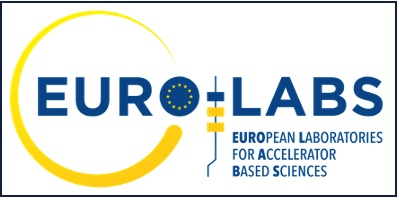Description
Colour centers in diamond have currently found applications in quantum devices, in particular the nitrogen-vacancy center NV, which is being used as a nanoscale sensor for magnetic fields or temperature. Group-IV vacancy centers are, thanks to their symmetry properties (due to the so-called split-vacancy configuration), of great interest as spin-photon interfaces for a number of quantum applications [1] in which they are considered superior to NV, which does not possess mirror-symmetry. PbV- [1-3], containing the heaviest group-IV atom, holds particular promise due to its predicted long spin-coherence times [3]. Recently, photon emission with transform-limited linewidth at temperatures above 10 K has been shown from PbV- [4], making the center a major candidate for the realization of quantum repeaters. Optically active PbV- centers have been realized following ion implantation and high temperature annealing (>1200°C), however, little is known about their structural formation mechanism.
In order to study the PbV structural yield of formation from implanted Pb, we have investigated its lattice location by using the beta emission channeling (EC) technique from the radioactive isotope 209Pb (t1/2=3.25 h) produced at the ISOLDE/CERN facility. Following implantation at room temperature (RT) with 8E11 cm-2 50 keV 209Pb, EC characterization revealed ~40% of implanted 209Pb on the so-called bond-center (BC) sites, which are characteristic for the split-vacancy configuration, in addition to ~60% on substitutional sites. Annealing at 600°C or 900°C did not substantially alter the BC fractions, and implantation at these elevated temperatures resulted in the same high BC fractions ~40%. PbV thus shows a high structural yield of formation for various implantation conditions, as well as a high thermal stability. In a different sample, implanted with stable 208Pb at a fluence of 5E12 cm-2 and annealed at 1100°C, RT fluorescence from the C and D ZPL of PbV- at 552 and 557 nm following excitation with 450 nm was observed. We conclude that, while thermal annealing is required in order to restore or modify the crystal environment so that luminescence from PbV centers can be excited and/or observed, it does not increase their structural formation yield, which is already high directly following RT implantation. The formation mechanism of PbV and possible scenarios for its optical activation will be discussed and a comparison given to the cases of GeV [5] and SnV [6].
This project has received funding from the European Union's Horizon Europe Research and Innovation programme under Grant Agreement No 101057511.
References
1. C. Bradac, W. Gao, J. Forneris, M.E. Trusheim, I. Aharonovich, Quantum nanophotonics with group IV defects in diamond, Nature Comm. 10 (2019) 5625.
2. S. Ditalia Tchernij et al., Spectral features of Pb-related color centers in diamond – a systematic photoluminescence characterization, New J. Phys. 23 (2021) 063032.
3. P. Wang et al., Low-temperature spectroscopic investigation of lead-vacancy centers in diamond fabricated by high-pressure and high-temperature treatment, ACS Photonics 8 (2021) 2947.
4. P. Wang et al., Transform-limited photon emission from a lead vacancy center in diamond above 10 K, Phys. Rev. Lett. 132 (2024) 073601.
5. U. Wahl et al, “Structural formation yield of GeV centers from implanted Ge in diamond”, Materials for Quantum Technologies 4 (2024) 025101.
6. U. Wahl et al, “Direct structural identification and quantification of the split-vacancy configuration for implanted Sn in diamond”, Phys. Rev. Lett. 125 (2020) 045301.
| Work-package | WP2 - RIs for Nuclear Physics |
|---|---|
| Facility identifier | CERN-ISOLDE |
